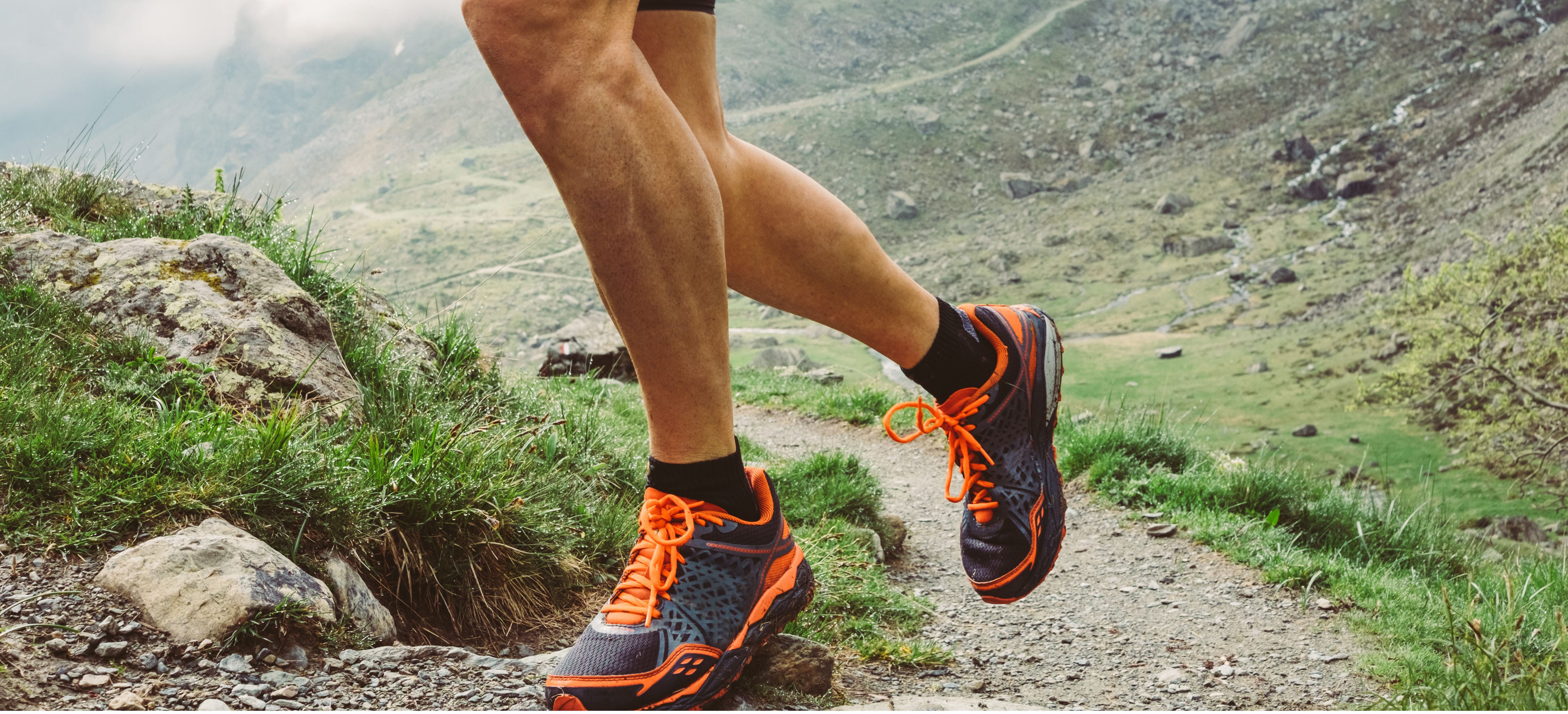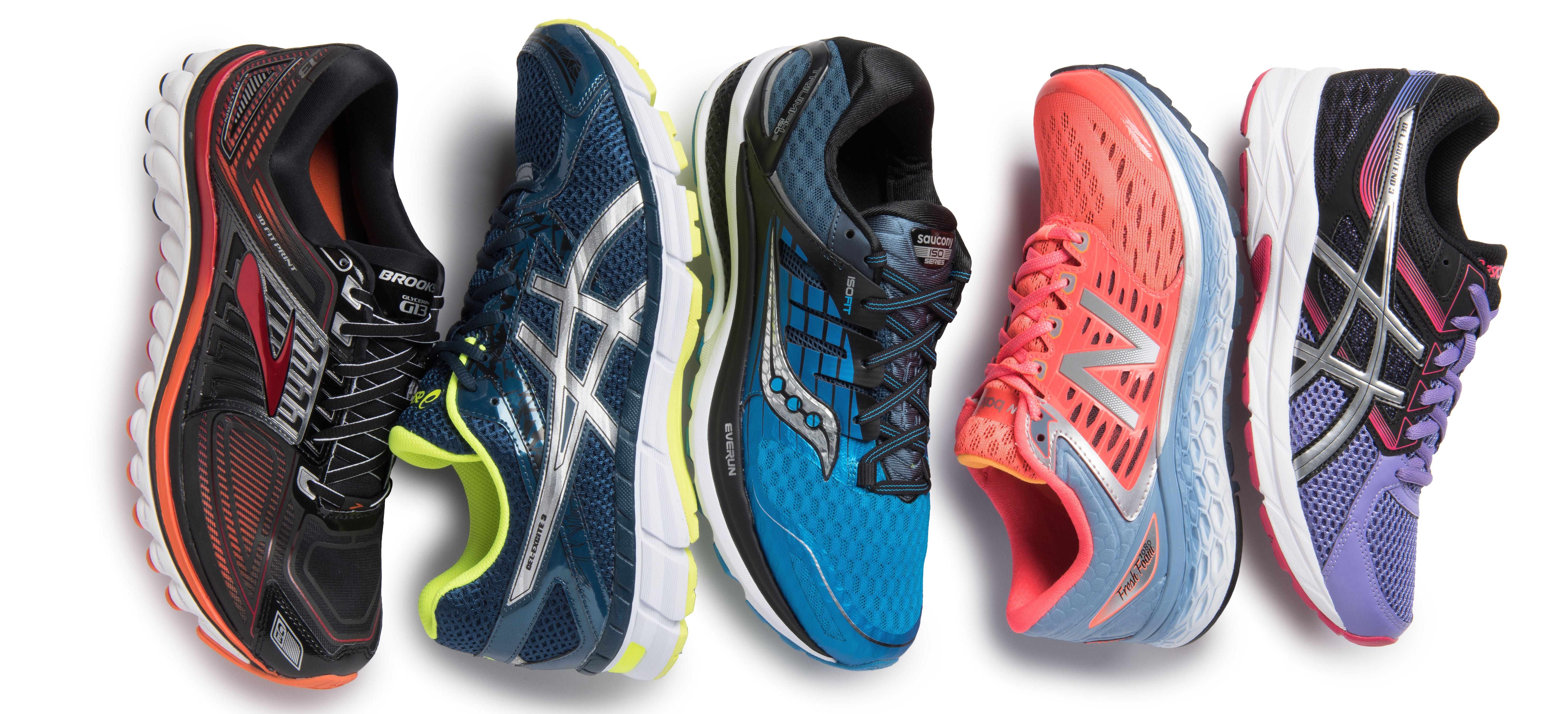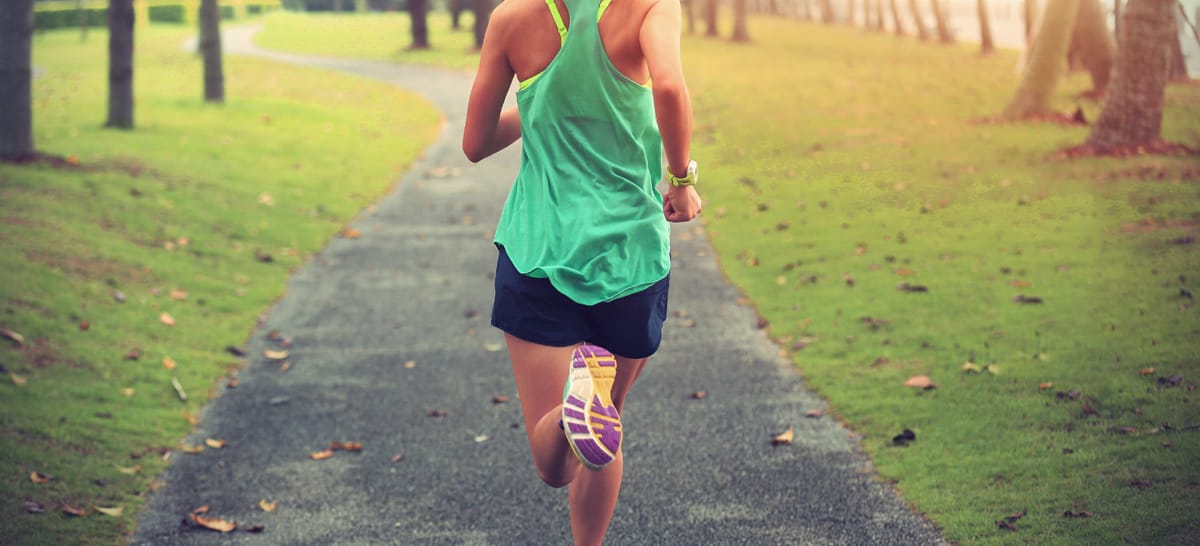What is Dynamic Stretching?
Dynamic stretching is a form of stretching while in motion. Unlike static stretching (stretching without moving), dynamic stretching puts key muscles through a full range of motion. Dynamic stretches should be part of a runner's comprehensive warm-up routine.
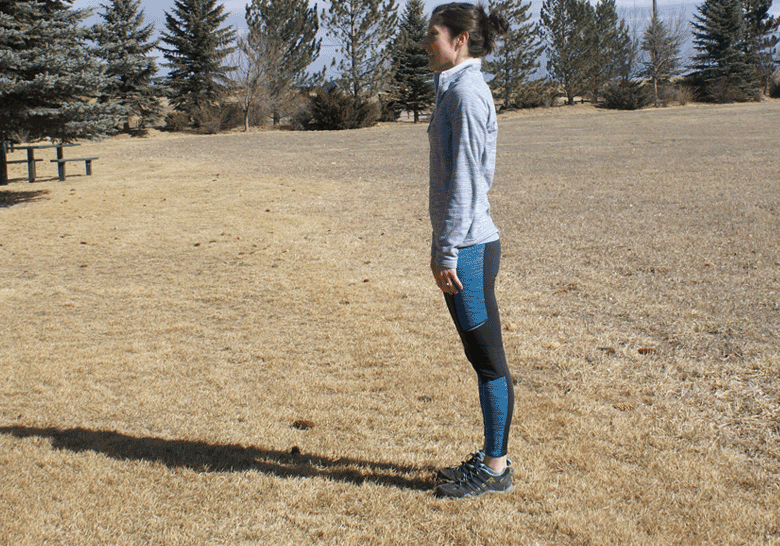
Examples of Dynamic Stretching
Dynamic stretching is an active form of stretching that can be done in a variety of ways. High knees, butt kicks and walking lunges are a few common dynamic stretches. Consider adding these dynamic stretches to your pre-run routine:
Hip Flexor Stretch
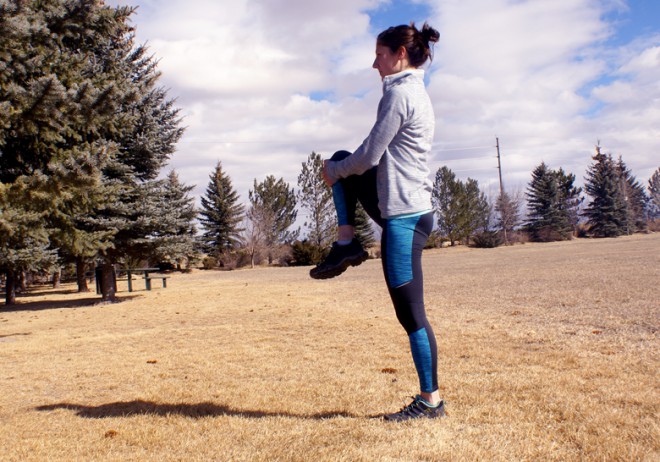
Pull one leg up toward your chest, holding for a few seconds before switching to the next leg. You can walk forward while completing this stretch or stand in place. Complete this stretch 8-10 times per leg.
Glute Stretch
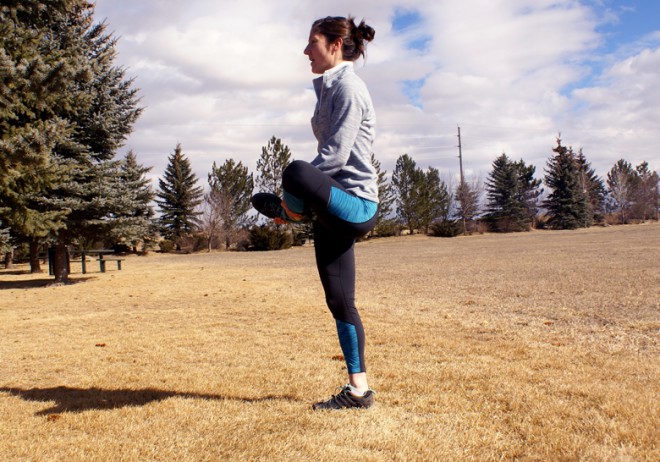
Grab your lower leg just above your ankle and pull it up with your knee pointing out. The position of your leg should be similar to a seated butterfly stretch. This will mostly be felt in your glutes, but you might also feel a stretch in your groin and hip flexors. Stretch each leg 8-10 times while walking forward or standing in place.
Quad Stretch
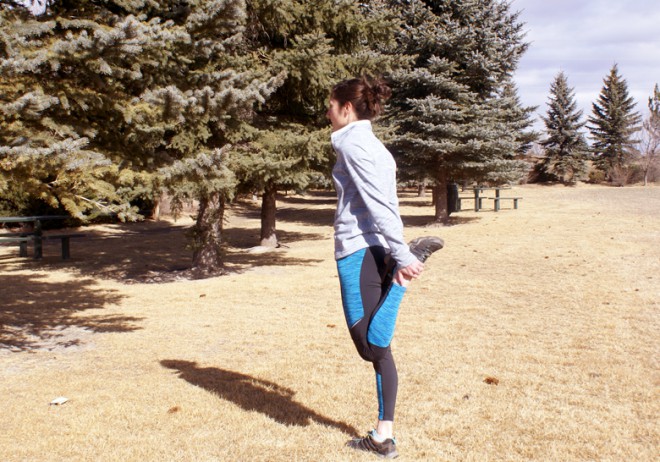
Holding your ankle, pull your heel up and toward your butt. Either walking forward or standing in place, switch legs every few seconds until you've completed 8-10 stretches per leg.
Hamstring Stretch
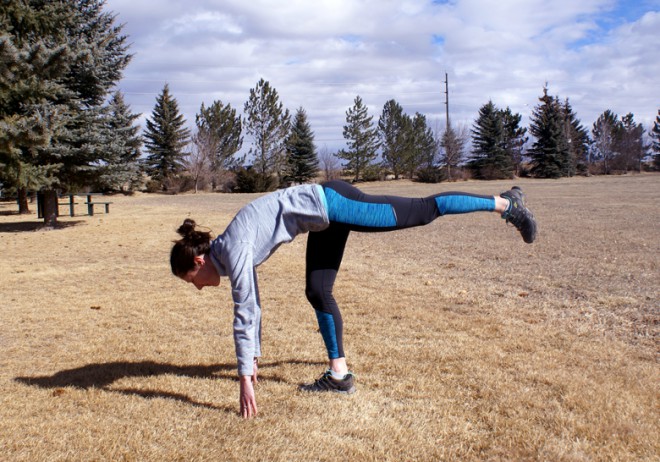
Lean forward and let one leg naturally rise, using your fingertips (or hands, depending on flexibility), to stabilize you. This stretch is felt in the hamstring of the leg planted on the ground. Be sure not to lock your knees or push too hard for a deep stretch. Similar to all dynamic stretches, this should be a light stretch with fluid motion. Hold for a second or two on each leg 8-10 times through.
Leg Swings
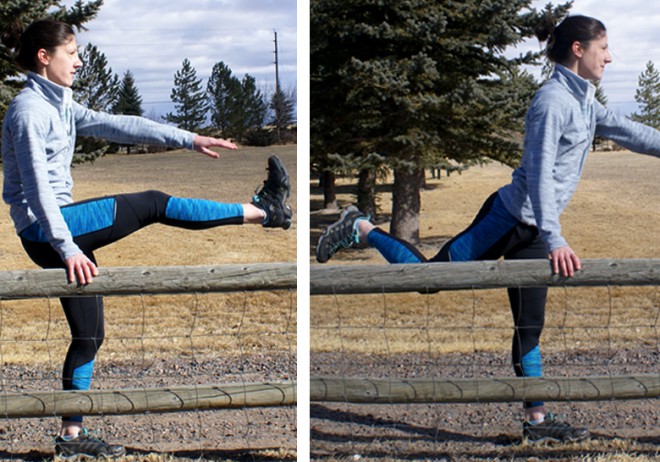
Find a wall, fence or another object to stabilize you in order to perform this dynamic stretch. Stand next to the wall, touching your hand to it for stabilization. Gently swing your inside leg back and forth, holding out your arm for more balance if needed. You should feel this in your glute and hamstring. For a hip opener, face the wall and swing your leg side to side, leaving enough space for your swinging leg to cross in front of your planted leg. Complete 8-10 times on each leg.
What is Static Stretching?
Static stretching is stretching while holding still. This is what most often comes to mind when thinking about stretching, but it isn't necessarily the best way to warm up before a run. Dynamic stretching before a run (rather than static stretching) can improve performance and be more effective at preventing injuries. Static stretching is best for helping muscles recover after running.
Examples of Static Stretching
Some common examples of static stretching include a standing or sitting toe reach and other types of stretches that are held for 20-30 seconds before releasing. The below static stretches are most helpful to runners and hikers.
Cross-Legged Toe Touch
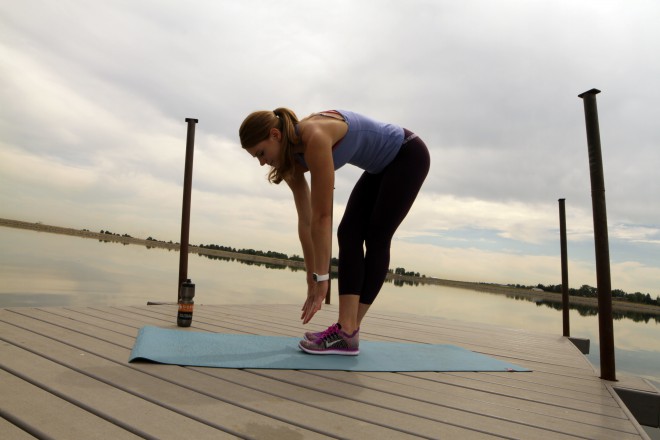
Cross your legs and reach toward your toes. Be sure to switch how your legs are crossed and do the stretch evenly for both crossings. Crossing your legs during a toe touch can help you get a deeper stretch.
Static Glute Stretch
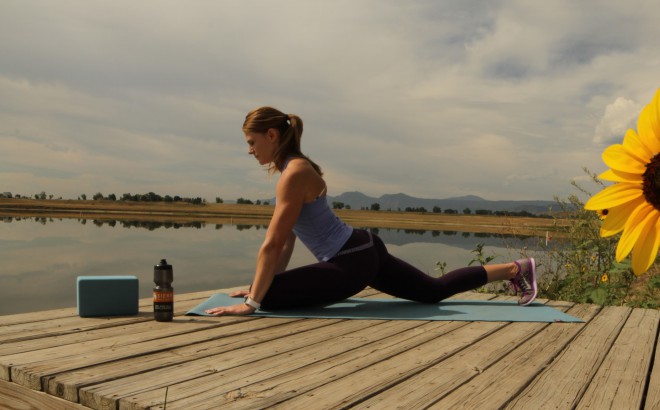
Often referred to as pigeon pose, this stretch works to open your hips and stretch your glutes. Cross one leg in front of you and ease back into the stretch with your other leg straight behind you.
High Lunge
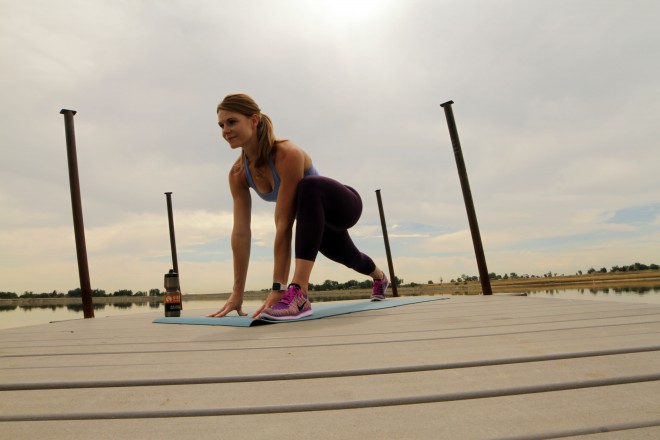
Get into a lunge position. Instead of placing your front foot below your chest, place it to the outside of your arm. This slight change in positioning helps to open your hips, which are often tight on runners.
Static Calf and Hamstring Stretch
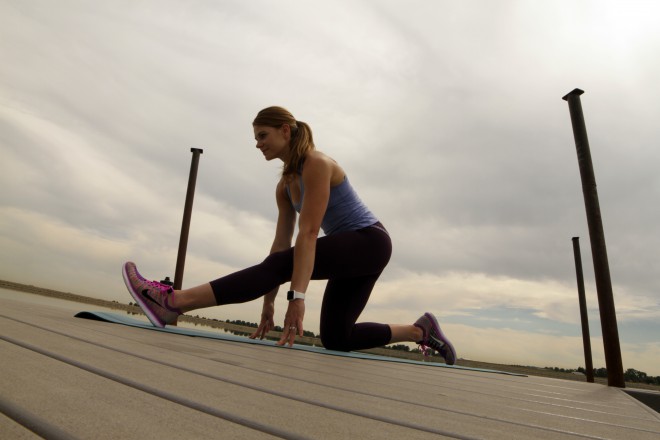
While resting on one knee, straighten your other leg in front of you with your heel touching the ground. Touch your fingertips to the ground for balance. It's alright for your knee to have a slight bend.
Seated Glute and Piriformis Stretch
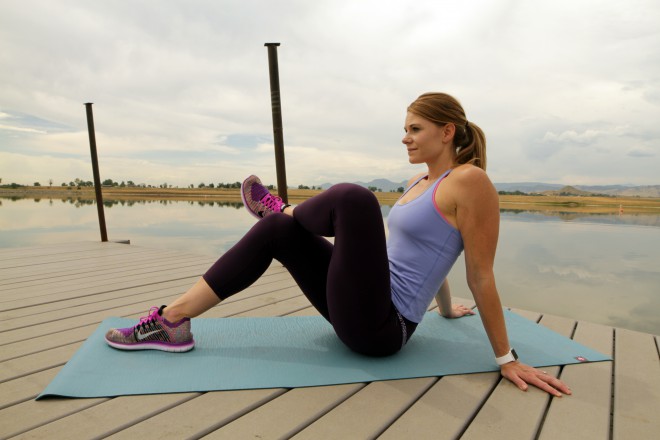
In a seated position, bend one knee and cross your other leg over the top of it. Your crossed leg should be touching your knee just above the ankle. You can deepen this stretch by bringing your bent knee closer to your chest. This is another great hip opener.
Both dynamic and static stretches are important for runners. Dynamic stretches help gently warm muscles up and prepare them for motion, while static stretches give them a deeper stretch to aid recovery. Be sure to add both types of stretches to your routine to get the most out of your workout.
